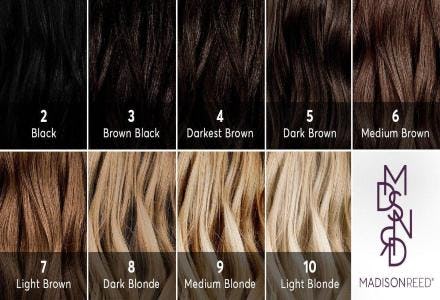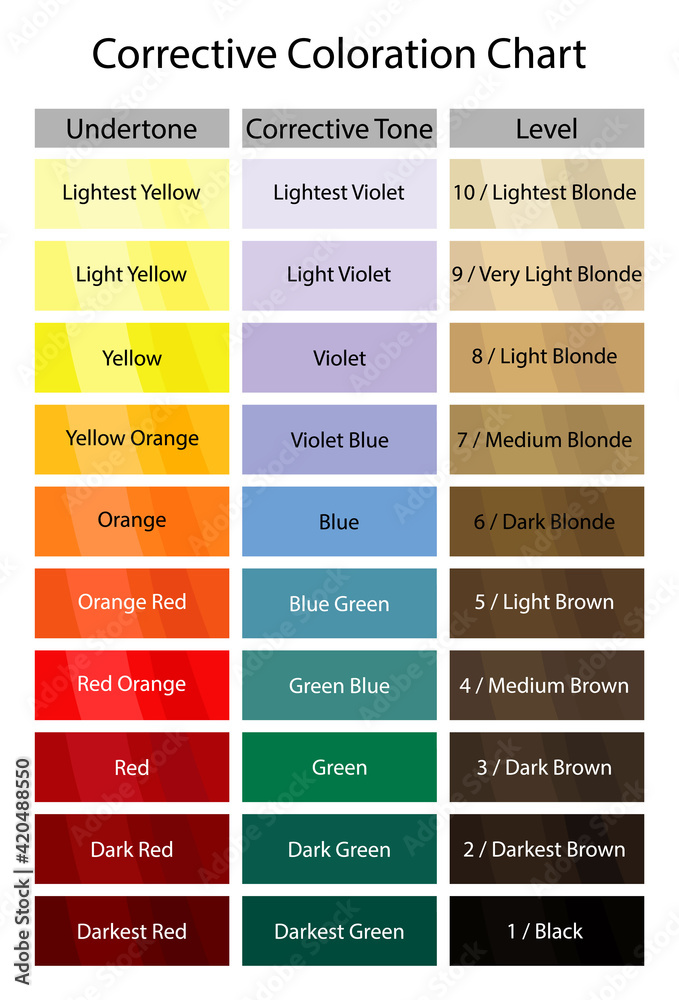Table Of Content

For example, Clairol has their colors organized into different groups based on what color your ends appear to be. Following a chart like this would be most helpful to someone looking to use color just on their roots to match their ends. Have you noticed the number and letter sequence on the box of color?
Naturtint Permanent Hair Color 4N Natural Chestnut (Packaging may vary)
20 Best Hair Gloss and Glazes 2024, According to Beauty Experts - Cosmopolitan
20 Best Hair Gloss and Glazes 2024, According to Beauty Experts.
Posted: Mon, 07 Aug 2023 07:00:00 GMT [source]
It groups hues into families – where colors like burgundy is part of the red hue family, or lilac is part of the pink hue family. Mind that we speak about the levels of color (depth/lightness), not hair color itself! If the colors distract you from determining your hair level, take a photo of your hair and convert it to black and white image. This simple hack will let you know how dark or light your current hair color is. Knowing your hair level before your appointment gives you a realistic sense of what you can ask for and achieve.
What Is Hair Tone?

They could therefore apply extra to prevent blonde hair from becoming too warm. Level is the depth of color, how light or dark your hair is, and the amount of black and brown pigments you have. Tone is the underlying color of your hair, determined by the amount of red and yellow pigments in your hair. Warm tones tend to be reds, oranges, and golds, while cool tones relate to blue, green, and purple.
Customized colors
Also use color extractors to lift out black, dark deep pigments and red dyes before lightening. Color theory is the study of how colors work together and against each other. It shows what happens when you combine certain colors or when you lay one color over another. To better understand how hair color works, you can use the graphic for HairColor Tones for reference. The hair color wheel shows how warm tones are opposite of the cool tones.
Naturtint Permanent Hair Color 7N Hazelnut Blonde (Packaging may vary)
When intensifying the tone in your hair the color wheel acts as a reference for several shades that can be used for different results. Say for example you have an orange like warm tone and you want to deepen it and add more of a mahogany type of red. The formula that you will mix will add a red violet like pigment to blend with the orange making it a deeper but cooler toned red hue. If you add the red alone it will leave it red but with a vibrant orange tone present. The violet-red cancels the bright orange and intensifies the cooler red and making it a rich mahogany tone.
Level 8 is a medium blonde, while levels 9 & 10 are the lightest blonde colors. When aiming for your desired hair color, it’s crucial to understand how to achieve the perfect shade. Utilizing color theory is essential to avoid muddy or unintended results, especially when dealing with faded colors.
Bottom line - it’s important to know where you are starting - so you can select a shade in a level that is achievable for you. The first number, ranging from 1 to 10, indicates the hair level, also known as the depth level or base color. While color levels refer to the depth of color, the tone refers to the warmth or coolness of the shade. When mixing your color, remember that the right developer volume is key to achieving your desired hair color while maintaining hair health. This developer concentration is formulated to open the hair cuticle just enough to introduce a new tone or tint, making it perfect for subtle changes and enhancing natural color depth. It’s also the go-to choice for covering minimal gray hair or for those who are looking to refresh their color without drastic alteration.
Typically, if you have warm skin, you’ll want to opt for a slightly cooler hair color, whereas cool skin tones can look especially pretty with slightly warmer hair colors. When you pair opposites together, it can help balance out your look for an all-around aesthetically pleasing appearance. As much as we’re all for switching up your signature shade in favor of one of the season’s hair color trends, let’s take a minute to think it over.
In order to rock a truly gorgeous look, you’ll not only need to master your color selection and application but your maintenance routine, too. There are various tools colorists might use to find the perfect blend for every client, with the most common being a color chart or a book of hair swatches. And don’t forget to stock up on the ultimate color protection hair care products to keep color looking healthy and vibrant. From cleansing color shampoo to conditioning mousse and color refresh conditioner, browse all our hair color protection and care products. Consider this your chance to demystify the salon experience, and your opportunity to 'try on' a hair color before you fully commit. Colorists, read on to brush up on the skills you’ve already expertly honed.
Now, let’s look at how they correlate with a numbering system to create a hair color formula. While we can’t lift the lid on every secret your stylist has up their sleeve, we’re giving you a little more insight into how the Wella hair color charts are used. The L’Oreal Paris Excellence Creme Permanent Hair Color is a line of dyes that use a creme formula to produce colors that look natural but retain some gloss and shine. This product is particularly good at covering up gray and white hair and manages to be retained by strands which are damaged and stripped.
Understanding the interplay between hair color levels and tones is crucial for achieving your desired shade. Whether you’re a seasoned stylist or a DIY color enthusiast, diving into the world of hair color chemistry, product knowledge, and the latest trends is crucial. From selecting the right base color to mixing custom shades and correcting unwanted tones, this guide will equip you with the skills to create flawless hair color outcomes. Most lines have their own color chart for you to view before picking your color; look at the color chart from the line you are using before you pick a color. Normally the colors are organized into sections of different underlying pigments or tones. If you have naturally dark hair but want a medium warm brown, select a color that has both a little bit of red and natural.
No comments:
Post a Comment